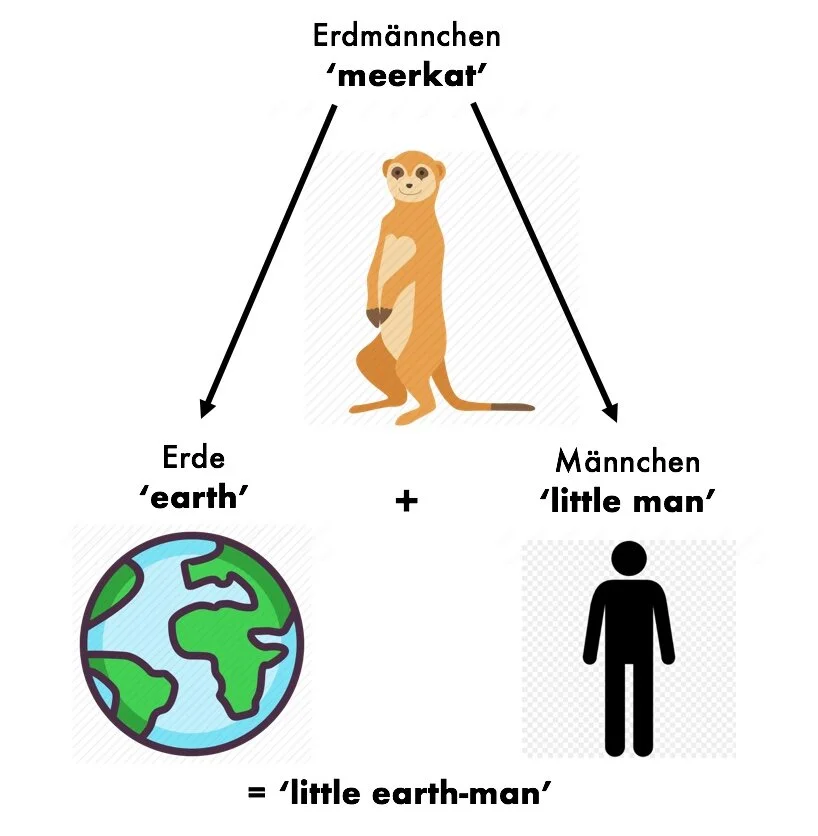Natural Sound Change
Fig. 1 Family tree of the Indo-European languages. (Source)
Introduction
All languages change over time. Knowledge of this kind of change, particularly sound change, can help a language learner understand how sounds in related languages are organized and pronounced. A sound change can be described as “natural” because it occurs independently in different language families, and is explained by phonetic motivations, rather than social ones.
What does it mean for two languages to be related?
When linguists talk about a “genetic” relationship between two languages, they are claiming that both descended from a common ancestral language that existed in the past. As speech communities continue to diverge and diversify over time, whole language families arise. The diversity of languages within a language family is the result of incremental changes to what was once a single language.
In this blog post, an extension of our discussion in Episode 1 of LanGoPod, we will discuss how linguists determine if two languages are related and look at examples of a common sound change.
Determining Relatedness
In order to determine if two languages are related, linguists have established an evaluative procedure called the Comparative Method. The comparative method is confirmed in European languages which have written records going back millennia to verify proposed sound changes. For example, we can examine manuscript copies of Latin texts, or inscriptions from the days of the Roman Empire and the Republic before that, and confirm that what was once an /f/ sound in Latin changed to an /h/ sound in one of its descendants, Spanish.
The comparative method is also used to establish language families and reconstruct ancestral languages of which we have no written records (as is the case for most of them). The ancestral language of a language family is referred to as a “proto-language,” (from Greek πρῶτος prôtos ‘first’) and any language that descended from it is called a “daughter language.” Our knowledge of the Austronesian language family comes exclusively from applying the comparative method to the modern descendant languages, as there are no written records we could make use of.
Illustration: the Comparative Method applied to Austronesian languages
Austronesian languages come from a single ancestor language, which we call Proto-Austronesian, and which was spoken five thousand years ago in what is now Taiwan. Robert Blust, my teacher at U. of Hawaiʻi at Mānoa has spent a lifetime reconstructing some of the vocabulary of Proto-Austronesian, and the curious reader can check out his Austronesian Comparative Dictionary (ACD) for free online. The Austronesians spread out by boat starting many millennia ago, reaching as far west as Madagascar, as far south as New Zealand, and as far east as Rapa Nui (Easter Island)! There are over 1,200 Austronesian languages today, making it the second biggest language family (by number of languages) in the world. For more on this, check out this Ethnologue article.
Cognates
The first step in the comparative method is to identify potential cognates in the two languages. A cognate is a word that both languages retain from their shared ancestral language. This is similar to how frogs and humans both have four limbs. The reason for the similarity between frogs and humans is that human and frogs both evolved from an ancient ancestral creature which also had four limbs. Cognates are similar to living organisms in this analogy: they are words from a shared ancestral language that are retained by related languages.
Table 1 illustrates some cognates among Indonesian, Roviana (Solomon Islands), and Hawaiian (U.S.A.), three related languages spoken in the Pacific. These three Austronesian languages have retained the cognates from a common ancestral language that linguists call Proto-Malayo-Polynesian, which we believe was spoken in the Philippines about four and a half thousand years ago. Proto-Malayo-Polynesian is a daughter language of Proto-Austronesian.
Table 1: Cognates in Indonesian, Roviana, and Hawaiian.
Looking at Table 1, it is easy to guess that the word for ‘five’ is related in all languages because it has the same form in all three modern languages: lima. How can linguists be certain the other words are related since they do not look the same? For that matter, how can linguists determine that similar words, such as lima, are not the result of borrowing? The answer to both is establishing that a recurring sound change has taken place in one language (group) that explains the differences in the modern forms.
Recurring sound changes, or sound correspondences, are sounds that may be different between two languages, but consistently have a correspondence in both languages. Looking only at our Indonesian and Roviana words, we can start to establish sound correspondences.
For example, as Table 2 shows, Indonesian the word for ‘two’ is dua and in Roviana it is (ka)rua. The parts that are cognate are dua and rua, while the syllable ka- was added after Roviana and Indonesian separated from their shared common ancestor. This gives us one example of a correspondence between Indonesian /d/ and Roviana /r/. (In an actual linguistic study we would need many more examples to verify the correspondence is not chance, but for the purposes of illustration, we can accept the correspondence for now.) The vowels in dua and rua also correspond, forming two more correspondence sets!
Table 2. Sound correspondences between Indonesian and Roviana.
In Table 2, the word for ‘five’ in both languages is lima, which tells us that all four of those sounds correspond in the two languages. In the words for ‘fish’ and ‘louse’ we see that when there is a /k/ in Indonesian, there is a /ɣ/ in the corresponding word in Roviana, but the other sounds are the same. The Roviana word for fish ends in a final “echo-vowel” -- it repeats the previous vowel because the Roviana language avoids ending words with a consonant. (Look for a more detailed discussion of this sort of pattern in future blog posts!)
If you were to compare many words in these two languages, you would discover more cognates, but also many more words which do not display sound correspondences. The lack of particular cognates is the result of the many changes that have occurred since the two languages diverged from their common ancestor. The two communities have lost old words, invented new words, and borrowed words from other communities they have encountered during that time. Sound correspondences can be thus also used to identify loanwords, even from related languages!
Related languages FAQ (to sum up so far)
Q: How do linguists determine two languages are related?
A: By looking at sets of words and identifying potential cognates, and then using recurring sound correspondences to eliminate loanwords and words that are similar through chance.
Q: How do linguists know which languages in a family are more closely related to one another than to others? For instance, English, German, and Hindi are all related, but English and German have a longer shared history, making them closer to each other than to their Indian cousin.
A: Using sound correspondences, linguists identify innovative sound changes and place languages in subgroups together based on shared innovations. Through tracking sound correspondences, retentions, and innovations, linguists can determine the position of a language within its family.
A common natural sound change: *p → *f → h
Now that we have some idea about cognates and sound change, let’s examine a common natural sound change, p → f → h. As a note on conventions, linguists use the asterisk “*” to indicate that a particular word or other element is not directly attested, but instead has been reconstructed.
First, let’s look at some examples of *p → f, then of *f → h, then *p → *f → h. The examples in this post all come from modern languages at different stages in the change. Some retain the original sound while others have undergone the change.
*p → f
A change of *p → f is attested in many independent cases in different language families in different places. However, the reverse change, f → p, is rarely encountered. (When it is seen, it is conditioned to change that way by either its position in the word or when being loaned into a language that lacks the sound /f/.) We can tell which language retains the sound /p/ from the shared ancestral language and which one has undergone the sound change!
For our example of *p → f, examine the word forms for ‘father’ in English and Spanish.
‘father’
Spanish: padre Modern English: father
Latin: pater Old English fæder
Proto-Indo-European: *pH₂tér
English and Spanish are both in the Indo-European language family. They both retain a form of the word for ‘father’ from the shared ancestral language, Proto-Indo-European. Recall that linguists use the comparative method to reconstruct words in the ancient ancestral languages of modern day language families. In the case of Proto-Indo-European, the word for ‘father’ is reconstructed as beginning with a /p/, like the modern Spanish form, padre. ‘Father’ itself is an example of p → f in English.
f → h
Another commonly observed sound change is f → h. This is also a change that typically only goes one direction, as h → f is only seen rarely and never outside of conditioned environments. Our example of f → h can be seen in the forms of the word for ‘oven’ in Portuguese and Spanish, two closely related languages.
‘oven’
Spanish: horno
Portuguese: forno
Latin: fornax
If we accept that f → h is a unidirectional sound change, then we can postulate that the word for ‘oven’ in their shared common ancestor must have begun with an /f/. In this case, we have written evidence that the Latin word for ‘oven’ did begin with an /f/, in the form of written records of Latin as spoken two millennia ago!
h → ∅
This example also points to the final stage of this sound change: silence. In modern Spanish, speakers do not pronounce the <h> that is written at the beginning of horno. At one time there was a consonant sound at the beginning of the word, or else speakers would have been unlikely to add a letter to represent a sound that wasn’t there. This sound change h → ∅ is also widely attested and unidirectional. In English, we have words borrowed from French with “silent <h>” like “hour” and “honest,” and English /h/ is often dropped between vowel sounds (e.g. “rehabilitate” or unstressed “he,” “him,” her”). Thus the full progression is: p → f → h → ∅.
This example raises another interesting point: where did the /f/ come from in the Latin form? The most obvious explanation is that it came from a /p/! How can this be, though, as we have already seen that Spanish retains /p/ all the way back from Proto-Indo-European? Linguists propose that Proto-Indo-European had more than one type of p! But that's a story for another blog post…
p → f → h
Finally, let’s examine an example of all three forms being present in different related languages. For this example we will go back to the Austronesian language family, specifically to the Oceanic branch spoken in the Pacific Ocean.
The Oceanic language family is a subgroup of languages within the Austronesian language family. There are about 450 Oceanic languages, all spoken in the Pacific Ocean. Using the comparative method, linguist Robert Blust (has reconstructed the word for ‘canoe house’ as *pale (see the data set below). Descendant word forms exist beginning with a /p/, /f/, and /h/ sounds in modern languages. Note that meaning is not constant across all modern languages -- this is because meanings change over time as well as sounds!
‘canoe house’
Roviana: paele ‘hall’
Samoan: fale ‘house’
Hawaiian: hale ‘house’
Proto-Oceanic: *pale ‘canoe shed’
Conclusion
Sound change is a natural part of language. Knowledge of sound change can help you understand how languages are related and which languages are more closely related. It can help you remember, recognize, and even predict related words in related languages. Additionally, knowledge of sound change is a huge advantage when studying related languages, such as Spanish and Portuguese, or even unrelated languages that have been in extended contact such as Mandarin, Japanese, and Korean. It’s worth remembering that language is changing, today and always, and that is why people speak differently in different places. Can you imagine what kinds of languages our language might change into in a few thousand years?































Tools for helping you master some of the trickier points of German grammar, whether you’re learning it for the first time or wanting to review the fundamentals. Los geht’s!